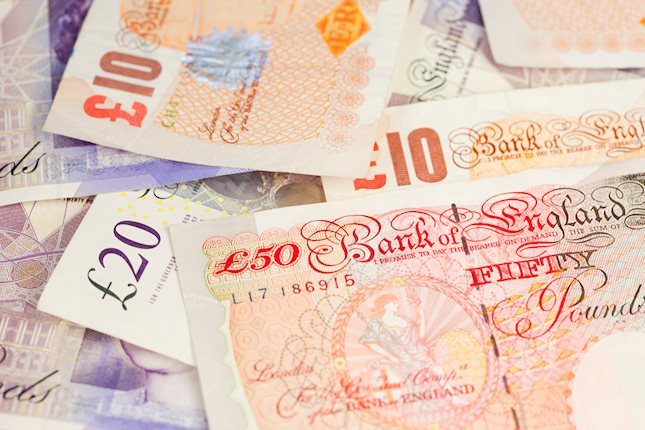- DXY slips as profit-taking sets in, falling toward 107.80.
- Traders parse disinflationary PCE data after Fed’s hawkish cut on Wednesday.
- The soft inflation readings might not alter the ‘wait and see’ posture of the Fed.
The US Dollar Index (DXY), which measures the value of the USD against a basket of currencies, took a hit after soft Personal Consumption Expenditures (PCE) data was released during the European session. Markets are also assessing political woes in the US, which soured market sentiment.
Daily digest market movers: US Dollar reacts to disinflationary PCE, shutdown risks, and Fed stance
- Risks of a US government shutdown have risen as House Republicans failed to pass a funding deal. Although a brief shutdown may have limited market impact, negotiations remain in focus.
- Longer-term Treasury yields continue to climb, with the 10-year yield near 4.60% and the 30-year yield at 4.77%, steepening the yield curve.
- November PCE data came in softer than expected, with monthly headline inflation at 0.1% and annual at 2.4%, below the 2.5% forecast.
- Core PCE also missed expectations. This slight disinflationary print may not alter the Fed’s recent hawkish stance significantly though.
- The Federal Reserve’s hawkish signals and fewer projected cuts in 2025 continue supporting the US Dollar’s relative strength.
- Meanwhile, robust Q3 GDP at 3.1% SAAR and solid consumer spending highlight underlying US economic resilience.
- The Atlanta Fed GDPNow model forecasts Q4 growth at 3.2% SAAR, and the New York Fed’s Nowcast sees Q4 at 1.9% SAAR, maintaining an upbeat growth narrative.
DXY technical outlook: Indicators ease as index slips below 108.00
After Wednesday’s upward movements, indicators are easing as the index breaks below 108.00 on Friday, currently hovering near 107.60. The pullback suggests the recent rally may be taking a breather. Still, if the DXY can hold above its 20-day Simple Moving Average, the broader bullish structure remains intact, leaving room for further gains once profit-taking subsides and fundamental drivers reassert themselves.
Central banks FAQs
Central Banks have a key mandate which is making sure that there is price stability in a country or region. Economies are constantly facing inflation or deflation when prices for certain goods and services are fluctuating. Constant rising prices for the same goods means inflation, constant lowered prices for the same goods means deflation. It is the task of the central bank to keep the demand in line by tweaking its policy rate. For the biggest central banks like the US Federal Reserve (Fed), the European Central Bank (ECB) or the Bank of England (BoE), the mandate is to keep inflation close to 2%.
A central bank has one important tool at its disposal to get inflation higher or lower, and that is by tweaking its benchmark policy rate, commonly known as interest rate. On pre-communicated moments, the central bank will issue a statement with its policy rate and provide additional reasoning on why it is either remaining or changing (cutting or hiking) it. Local banks will adjust their savings and lending rates accordingly, which in turn will make it either harder or easier for people to earn on their savings or for companies to take out loans and make investments in their businesses. When the central bank hikes interest rates substantially, this is called monetary tightening. When it is cutting its benchmark rate, it is called monetary easing.
A central bank is often politically independent. Members of the central bank policy board are passing through a series of panels and hearings before being appointed to a policy board seat. Each member in that board often has a certain conviction on how the central bank should control inflation and the subsequent monetary policy. Members that want a very loose monetary policy, with low rates and cheap lending, to boost the economy substantially while being content to see inflation slightly above 2%, are called ‘doves’. Members that rather want to see higher rates to reward savings and want to keep a lit on inflation at all time are called ‘hawks’ and will not rest until inflation is at or just below 2%.
Normally, there is a chairman or president who leads each meeting, needs to create a consensus between the hawks or doves and has his or her final say when it would come down to a vote split to avoid a 50-50 tie on whether the current policy should be adjusted. The chairman will deliver speeches which often can be followed live, where the current monetary stance and outlook is being communicated. A central bank will try to push forward its monetary policy without triggering violent swings in rates, equities, or its currency. All members of the central bank will channel their stance toward the markets in advance of a policy meeting event. A few days before a policy meeting takes place until the new policy has been communicated, members are forbidden to talk publicly. This is called the blackout period.
Information on these pages contains forward-looking statements that involve risks and uncertainties. Markets and instruments profiled on this page are for informational purposes only and should not in any way come across as a recommendation to buy or sell in these assets. You should do your own thorough research before making any investment decisions. FXStreet does not in any way guarantee that this information is free from mistakes, errors, or material misstatements. It also does not guarantee that this information is of a timely nature. Investing in Open Markets involves a great deal of risk, including the loss of all or a portion of your investment, as well as emotional distress. All risks, losses and costs associated with investing, including total loss of principal, are your responsibility. The views and opinions expressed in this article are those of the authors and do not necessarily reflect the official policy or position of FXStreet nor its advertisers. The author will not be held responsible for information that is found at the end of links posted on this page.
If not otherwise explicitly mentioned in the body of the article, at the time of writing, the author has no position in any stock mentioned in this article and no business relationship with any company mentioned. The author has not received compensation for writing this article, other than from FXStreet.
FXStreet and the author do not provide personalized recommendations. The author makes no representations as to the accuracy, completeness, or suitability of this information. FXStreet and the author will not be liable for any errors, omissions or any losses, injuries or damages arising from this information and its display or use. Errors and omissions excepted.
The author and FXStreet are not registered investment advisors and nothing in this article is intended to be investment advice.
Editors’ Picks
GBP/USD nears 1.2600 on renewed USD weakness
GBP/USD extends its rebound from multi-month lows and approaches 1.2600. The US Dollar stays on the back foot after softer-than-expected PCE inflation data, helping the pair edge higher. Nevertheless, GBP/USD remains on track to end the week in negative territory.
Gold rises above $2,620 as US yields edge lower
Gold extends its daily rebound and trades above $2,620 on Friday. The benchmark 10-year US Treasury bond yield declines toward 4.5% following the PCE inflation data for November, helping XAU/USD stretch higher in the American session.
Best Forex Brokers with Low Spreads
VERIFIED Low spreads are crucial for reducing trading costs. Explore top Forex brokers offering competitive spreads and high leverage. Compare options for EUR/USD, GBP/USD, USD/JPY, and Gold.


















